Manual transmission wagons, known as stick-shift wagons, combine practicality with driving engagement. They offer better fuel efficiency, lower costs, and more control compared to automatics, appealing to enthusiasts worldwide despite declining popularity due to modern alternatives.
1.1 Definition and Overview
A manual transmission wagon, also known as a stick-shift wagon, is a type of vehicle that combines the functionality of a wagon with a manual gearbox. These wagons require drivers to manually change gears using a clutch pedal and a gearshift, providing a more engaging driving experience. They are typically equipped with rear-wheel drive or all-wheel drive systems, making them versatile for various road conditions. Manual transmission wagons are popular among driving enthusiasts due to their fuel efficiency, cost-effectiveness, and superior control. Despite the rise of automatic and CVT transmissions, manual wagons remain a niche favorite for those who value precision and the joy of driving. They are widely used for both daily commuting and long-distance travel, offering a balance of practicality and performance.
1.2 History and Evolution
Manual transmission wagons trace their origins to the early 20th century, evolving alongside automotive technology. Initially, manual transmissions were rudimentary, with fewer gears and less refinement. Over decades, advancements like synchronized gears and improved clutch systems made them more accessible. By the mid-20th century, manual wagons became popular for their efficiency and durability. The 1980s and 1990s saw peak innovation, with features like overdrive and smoother shifting. Despite the rise of automatics, manual wagons retained a loyal following, especially among driving enthusiasts. Today, they remain a niche option, blending tradition with modern engineering, offering a unique driving experience that combines practicality and engagement.
1.3 Popularity and Market Trends
Manual transmission wagons have seen a decline in popularity as automatic and CVT transmissions gain favor. However, they retain a niche appeal among driving enthusiasts who value control and connection to the vehicle. Urbanization and traffic congestion have shifted consumer preferences toward convenience, reducing manual transmission demand. Despite this, some manufacturers continue to offer manual options, particularly in performance-oriented models. Regional differences exist, with manuals remaining popular in Europe and other areas where driving dynamics are prioritized. The rise of electric vehicles further challenges manual transmissions, as EVs often feature single-speed or dual-speed setups. This shift underscores the evolving automotive landscape, where manuals are no longer the default choice but remain cherished by a dedicated audience.
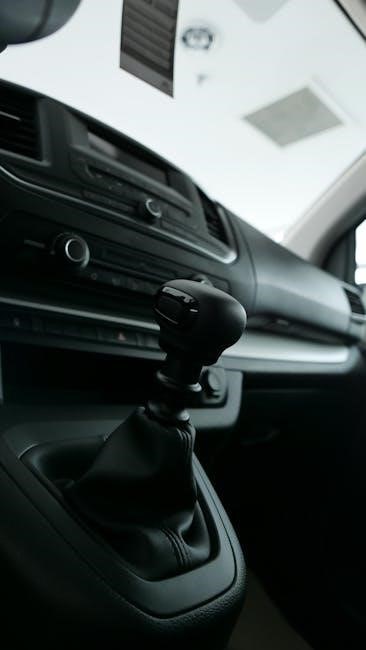
Benefits of Manual Transmission Wagons
Manual transmission wagons offer superior fuel efficiency, lower purchasing costs, and enhanced driving control. They provide a more engaging and cost-effective driving experience compared to automatics, and drivers seeking better vehicle command.
2.1 Fuel Efficiency
Manual transmission wagons are often praised for their superior fuel efficiency compared to automatic counterparts. By allowing drivers to control gear shifts precisely, they optimize power delivery and reduce unnecessary fuel consumption. Studies show that manual transmissions typically achieve better mileage, especially in city driving, due to the absence of torque converters and smoother power transfer. This makes them a preferred choice for environmentally conscious drivers and those seeking lower operating costs. However, fuel efficiency heavily depends on driving technique, as aggressive acceleration or improper shifting can negate these benefits. Overall, manual transmission wagons remain a practical option for those prioritizing economy and performance.
2.2 Cost-Effectiveness
Manual transmission wagons are often more cost-effective than their automatic counterparts. They generally have lower purchase prices due to simpler mechanical systems. Repair and maintenance costs are also reduced, as manual transmissions have fewer complex components compared to automatics. Additionally, manual transmissions typically require less expensive parts and labor when repairs are needed. Insurance premiums may also be lower for manual vehicles, as they are often considered less likely to be stolen and may appeal to more experienced drivers. Overall, the long-term savings in ownership costs make manual transmission wagons a financially attractive option for budget-conscious buyers seeking reliability and durability.
2.3 Driving Experience and Control
Manual transmission wagons offer a unique driving experience, providing direct control over gear shifts and acceleration. Drivers feel more connected to the vehicle, enhancing engagement and precision. This connection allows for smoother acceleration and better control, especially on winding roads or inclines. The ability to manually select gears gives drivers greater command over the wagon’s performance, making the driving process more interactive and enjoyable. Additionally, the clutch and gearshift require deliberate input, fostering a sense of mastery and satisfaction. For many, the tactile feedback of shifting gears is a key appeal, creating a more immersive and rewarding experience compared to automatic transmissions. This level of driver involvement is a major reason enthusiasts prefer manual wagons, even as automation becomes widespread.
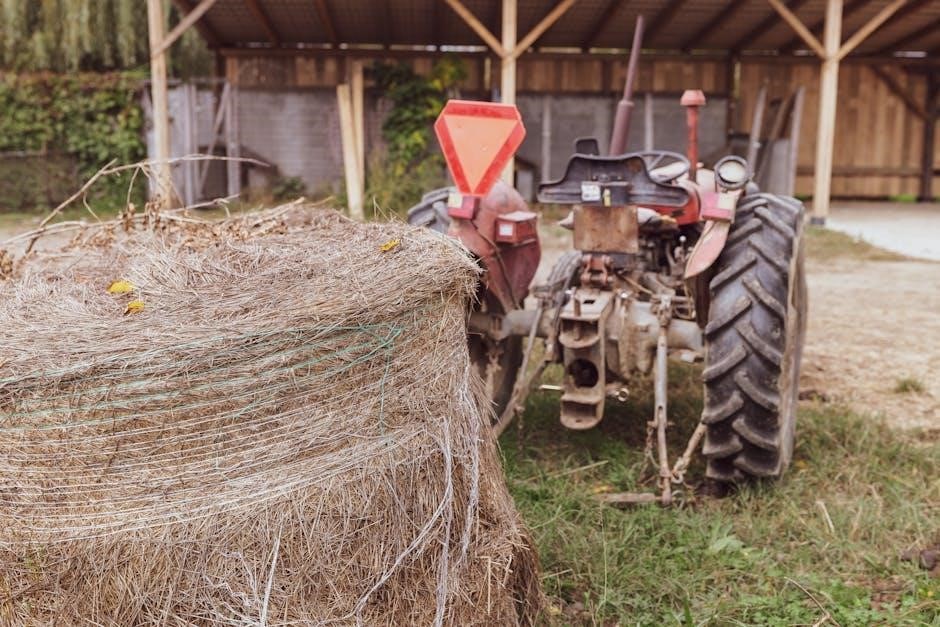
How Manual Transmissions Work
A manual transmission uses gears and a clutch to transfer engine power. The driver shifts gears manually using the shifter and clutch pedal, optimizing speed and torque.
3.1 Basic Components
A manual transmission wagon consists of several key components that work together to enable smooth gear shifting. The gearset includes various gears for different speeds, while bearings support these gears to reduce friction. The synchromesh system ensures smooth transitions between gears by synchronizing their speeds. The clutch assembly, including the flywheel, pressure plate, and throw-out bearing, connects and disconnects the engine from the transmission. The shift fork and selector rod facilitate gear selection, while the transmission fluid lubricates internal components. Finally, the housing encases all parts, protecting them from damage. Together, these elements allow the driver to manually control the vehicle’s speed and torque through the clutch pedal and gearshift.
3.2 Gear Shifting Mechanism
In a manual transmission wagon, the gear shifting mechanism involves the coordination of the clutch pedal, gearshift, and driver input. When the clutch is pressed, it disengages the engine from the transmission, allowing the driver to shift gears. The gearshift, connected to a fork inside the transmission, moves the desired gear into place. This process requires precise timing and feel to ensure smooth transitions. The synchronizer rings within the transmission help align the gears, reducing effort and noise during shifts. Proper technique, such as fully depressing the clutch and using the accelerator judiciously, is essential for seamless gear changes. This mechanism provides drivers with direct control over power delivery and speed, enhancing the driving experience.
3.4 Role of the Clutch
The clutch plays a pivotal role in manual transmission wagons, enabling seamless gear shifts by disconnecting the engine from the transmission. When the driver presses the clutch pedal, it disengages the engine’s power, allowing the gears to change without grinding. This action is facilitated by a hydraulic or cable-actuated system, involving a master cylinder, slave cylinder, and the clutch assembly. Proper clutch control is essential for smooth driving and preventing premature wear. Signs of a worn clutch include slipping and a spongy pedal feel, which can lead to transmission damage if not addressed. Effective clutch management is crucial, especially in varied driving conditions and when carrying heavy loads, to maintain control and extend the lifespan of the clutch and transmission system.

Maintenance and Care
Regular maintenance is crucial for manual transmission wagons, including fluid checks, clutch inspections, and addressing common issues promptly to ensure longevity and optimal performance over time.
4.1 Regular Maintenance Tips
Regular maintenance is essential for extending the lifespan of a manual transmission wagon. Check the clutch pedal for proper alignment and adjust if necessary. Ensure the transmission fluid level is within the recommended range, as low levels can cause wear. Inspect the gearshift linkage for smooth operation and lubricate moving parts to prevent friction. Replace the transmission filter every 30,000 to 60,000 miles to maintain fluid cleanliness. Monitor for unusual noises or vibrations, which may indicate worn components. Finally, follow the manufacturer’s recommended service schedule to address potential issues early. By adhering to these tips, you can maintain optimal performance and prevent costly repairs.
4.2 Common Issues and Repairs
Manual transmission wagons often face issues like clutch wear, gearbox damage, and synchronizer problems. Clutch failure typically occurs due to excessive wear or improper use, requiring replacement. Gearbox damage can result from missed shifts or lack of maintenance, leading to costly repairs. Synchronizer issues, such as grinding gears, may arise from worn components or driver error. Regular fluid checks and timely maintenance can prevent these problems. Repairs often involve replacing damaged parts, with costs varying based on severity. Addressing these issues early is crucial to avoid further damage and ensure smooth operation. Proper driving techniques and maintenance can extend the lifespan of manual transmissions, making them reliable for years.
4.3 Importance of Fluid Checks

Regular fluid checks are essential for maintaining the health of a manual transmission wagon. The gearbox relies on transmission fluid to lubricate moving parts, prevent overheating, and ensure smooth gear shifts. Over time, fluid can degrade or leak, leading to wear and tear on components. Drivers should inspect fluid levels periodically and top them up as needed. Using the correct type of fluid, as specified in the owner’s manual, is crucial for optimal performance. Neglecting fluid checks can result in costly repairs, such as replacing worn-out gears or seals. Additionally, fluid contamination from dirt or moisture can damage the transmission. Routine fluid maintenance not only extends the lifespan of the vehicle but also enhances overall driving efficiency and reliability. It’s a simple yet critical step in preserving the wagon’s longevity.
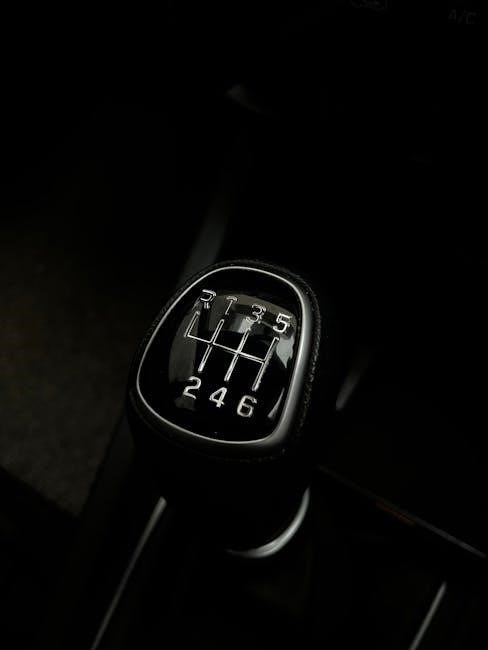
Driving Techniques
Mastering smooth shifting and clutch control is essential for manual wagons. Techniques include gradual acceleration, precise gear selection, and adapting to varying road conditions for optimal performance.
5.1 Mastering the Clutch and Accelerator
Mastering the clutch and accelerator is essential for smooth driving with a manual transmission wagon. Start by practicing in a flat, open area. Press the clutch fully and shift into first gear. As you release the clutch, gently press the accelerator to avoid jerking. Coordinate the clutch release with accelerator input for seamless gear changes. In traffic, “feathering” the clutch (light, partial engagement) helps maintain control. Avoid riding the clutch, as it can cause wear. Practice shifting through all gears, focusing on smooth transitions. With time, you’ll develop muscle memory, making driving more intuitive and enjoyable. Regular practice in varying conditions will enhance your mastery of the clutch and accelerator, ensuring a responsive and controlled driving experience.
5.2 Driving in Traffic
Driving a manual transmission wagon in traffic requires skill and patience. Frequent stopping and starting can be challenging, but smooth clutch operation minimizes wear and tear. Use low gears in heavy traffic to maintain control and avoid stalling. Downshifting before braking helps reduce speed gradually and prevents overheating brakes. Keep a safe distance from other vehicles to anticipate stops. In stop-and-go traffic, feathering the clutch can help maintain momentum without riding the clutch. Practice smooth acceleration to avoid jerky movements, which can discomfort passengers. While manual transmissions offer better fuel efficiency, heavy traffic may reduce these benefits. Experienced drivers find manual transmissions more engaging, but newcomers may find it stressful. Regular practice improves traffic driving skills, making it more enjoyable and efficient over time.
5.3 Towing and Payload Management
Manual transmission wagons can excel in towing and payload management due to their precise control over gear shifts. Drivers can optimize engine torque for heavy loads, ensuring efficient power delivery. When towing, using the correct gear for the terrain and load size is crucial to maintain control and prevent strain on the vehicle. Gradual acceleration and clutch management are key to avoiding wheel spin or loss of traction. Always consult the vehicle’s specifications for maximum towing and payload capacities. Properly securing the load and using trailer brakes can enhance safety; Regularly inspecting the vehicle’s suspension, axles, and cooling system under heavy loads is essential to prevent damage. Balancing the payload evenly ensures stable handling, making manual wagons reliable for demanding tasks when driven skillfully.
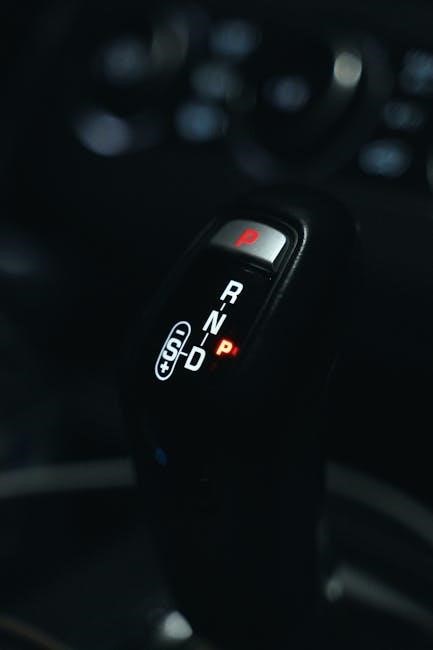
Safety Considerations
Manual transmission wagons require attention to clutch control and gear shifting to prevent accidents. Regular inspections and understanding emergency procedures ensure safer driving experiences and vehicle reliability.
6.1 Preventing Accidents
Preventing accidents in manual transmission wagons requires a combination of proper driving techniques, regular maintenance, and situational awareness. Common causes of accidents include driver error, such as improper gear shifting or riding the clutch, which can lead to sudden stops or loss of control. Regular maintenance, such as checking brake pads and fluid levels, is crucial to ensure the vehicle operates safely. Additionally, drivers should avoid distractions, follow traffic rules, and maintain a safe distance from other vehicles. Smooth acceleration and gradual braking are key to maintaining stability, especially in adverse weather conditions. By mastering proper driving habits and ensuring the vehicle is well-maintained, drivers can significantly reduce the risk of accidents while operating a manual transmission wagon.

6.2 Emergency Procedures
In the event of an emergency, manual transmission wagons require specific actions to ensure safety. If the clutch fails, shift to neutral and coast to a safe stop. For a stuck gear, apply the clutch fully and wiggle the gearshift gently. In case of overheating, pull over immediately and avoid driving until the issue is resolved. If the vehicle skids, avoid sudden movements and ease off the accelerator. Always keep an emergency kit and ensure the parking brake is engaged on slopes. Regular inspections can prevent such issues. Stay calm and follow proper procedures to minimize risks and ensure passenger safety.
6.3 Vehicle Inspection Checklist
A thorough vehicle inspection is crucial for maintaining a manual transmission wagon’s performance and safety. Start with the exterior: check tires for wear, ensure proper inflation, and inspect for damage. Examine brakes, suspension, and steering components for any signs of wear or damage. Under the hood, verify fluid levels, including engine oil, transmission fluid, coolant, and brake fluid. Inspect belts and hoses for cracks or leaks. For manual transmissions, check the clutch pedal’s operation and gearshift mechanism for smooth engagement. Finally, review the dashboard warning lights and ensure all electrical systems, such as lights and signals, are functioning properly. Regular inspections help prevent breakdowns and ensure optimal driving conditions.
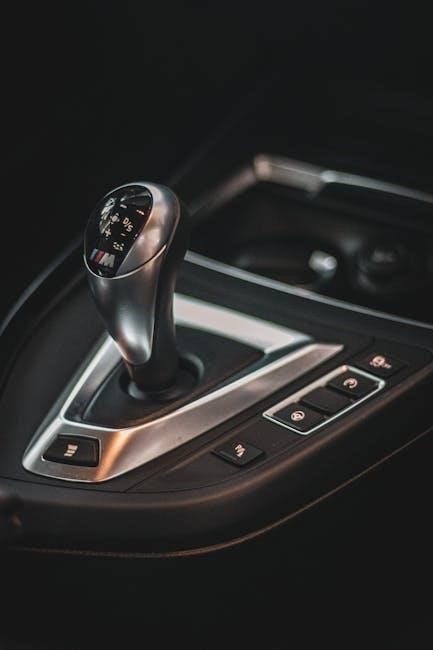
Future of Manual Transmission Wagons
Manual wagons face declining demand due to EV growth, yet niche enthusiasts keep them relevant, ensuring their survival in specific markets.
7.1 Decline in Popularity
The popularity of manual transmission wagons has significantly declined in recent years, largely due to the rise of automatic and continuously variable transmissions. Modern drivers often prioritize convenience and ease of use, especially in urban environments where stop-and-go traffic is common. Additionally, advancements in automatic transmissions have narrowed the gap in fuel efficiency and performance compared to manuals. The shift toward electric vehicles (EVs) has further accelerated this trend, as EVs inherently require different drivetrain technologies. While manual transmissions still hold a niche appeal for driving enthusiasts, their mainstream market share continues to shrink as automakers focus on meeting consumer demands for smoother, more automated driving experiences.
7.2 Impact of Electric Vehicles
The rise of electric vehicles (EVs) is significantly influencing the fate of manual transmission wagons. EVs typically feature single-speed or automatic transmissions, reducing the demand for manual systems. As EVs gain popularity due to environmental benefits and technological advancements, the preference for manual wagons is declining. Many manufacturers are shifting focus to EV production, potentially phasing out manual options. Additionally, EVs offer instant torque and smooth acceleration, altering driving dynamics that once favored manual transmissions. This shift may relegate manual wagons to niche markets, appealing only to enthusiasts. The transition underscores a broader industry move toward automation and sustainability, challenging the traditional appeal of manual transmission wagons.
7.3 Niche Market Appeal
Manual transmission wagons continue to attract a dedicated niche audience, particularly among driving enthusiasts who value control and the tactile experience of shifting gears. These vehicles often appeal to cost-conscious buyers, as they are typically more affordable to purchase and maintain than automatic or CVT counterparts. Additionally, the lower mechanical complexity of manual transmissions can reduce long-term repair costs, making them a practical choice for budget-minded drivers. This niche appeal ensures that manual transmission wagons remain relevant, even as automatic and electric vehicles dominate the mainstream market. Their enduring popularity highlights a balance between functionality and driving satisfaction, catering to a specific demographic that prioritizes both efficiency and engagement behind the wheel.
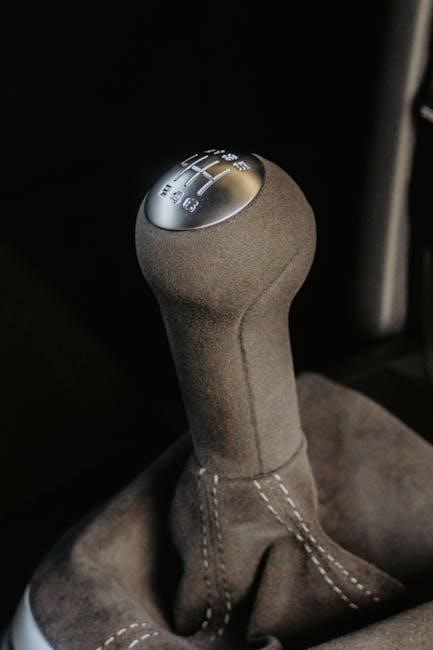
FAQs and Common Queries
Common questions include whether manual wagons are worth buying, cost comparisons, and ease of driving. Many inquire about maintenance and learning to drive manuals effectively.
8.1 Is a Manual Transmission Wagon Worth Buying?
Deciding whether a manual transmission wagon is worth buying depends on your priorities. For budget-conscious drivers, manual wagons are often more affordable to purchase and maintain than automatics. They also offer better fuel efficiency and a more engaging driving experience. However, with the rise of automatic and electric vehicles, manual wagons are becoming less common. If you value control and enjoy driving, a manual wagon is a great choice. Yet, if convenience and ease are priorities, you might prefer an automatic. Additionally, learning to drive a manual takes time and practice. Ultimately, it’s a worthwhile option for those who appreciate the connection between driver and vehicle, but it may not suit everyone’s lifestyle or needs.
8.2 How to Choose the Right Model
When selecting a manual transmission wagon, consider your lifestyle and needs. Assess whether it’s for daily commuting, family use, or off-road adventures. Evaluate your budget, balancing affordability with quality and durability. Research models, focusing on reliability, fuel efficiency, and safety features like airbags and electronic stability control. Compare cargo space and brand reputation. Test drive potential models to gauge handling and clutch responsiveness. Investigate maintenance costs and warranty offerings. Lastly, seek recommendations from experienced owners to make an informed decision that aligns with your preferences and requirements.
8.3 Cost of Ownership Comparison
Manual transmission wagons typically have lower purchase prices compared to automatic models, making them a cost-effective choice. Maintenance and repair costs are generally lower as well, with fewer complex components. Insurance premiums may also be reduced for manual vehicles due to their lower theft risk and simpler mechanics. Over time, fuel efficiency further contributes to savings, especially for drivers with long commutes. However, automatic wagons may hold better resale value in some markets, which could offset initial cost differences. Overall, manual transmission wagons offer significant savings in upfront and long-term expenses, making them a financially appealing option for budget-conscious buyers.
8.4 Learning to Drive a Manual
Learning to drive a manual transmission wagon requires patience and practice. Start by understanding the clutch and gear mechanism. Find a safe, open space to practice pressing the clutch and shifting gears smoothly. Begin with stationary practice, then gradually move to slow speeds. Focus on coordinating the clutch release with accelerator input to avoid stalling. Practice uphill starts and stopping in traffic to build confidence. Common challenges include stalling and rough shifting, but persistence improves skill. Consider enlisting an experienced driver for guidance. Once comfortable, gradually tackle various driving conditions. Mastering a manual transmission enhances control and connection with the vehicle, making it a rewarding skill for wagon enthusiasts.
